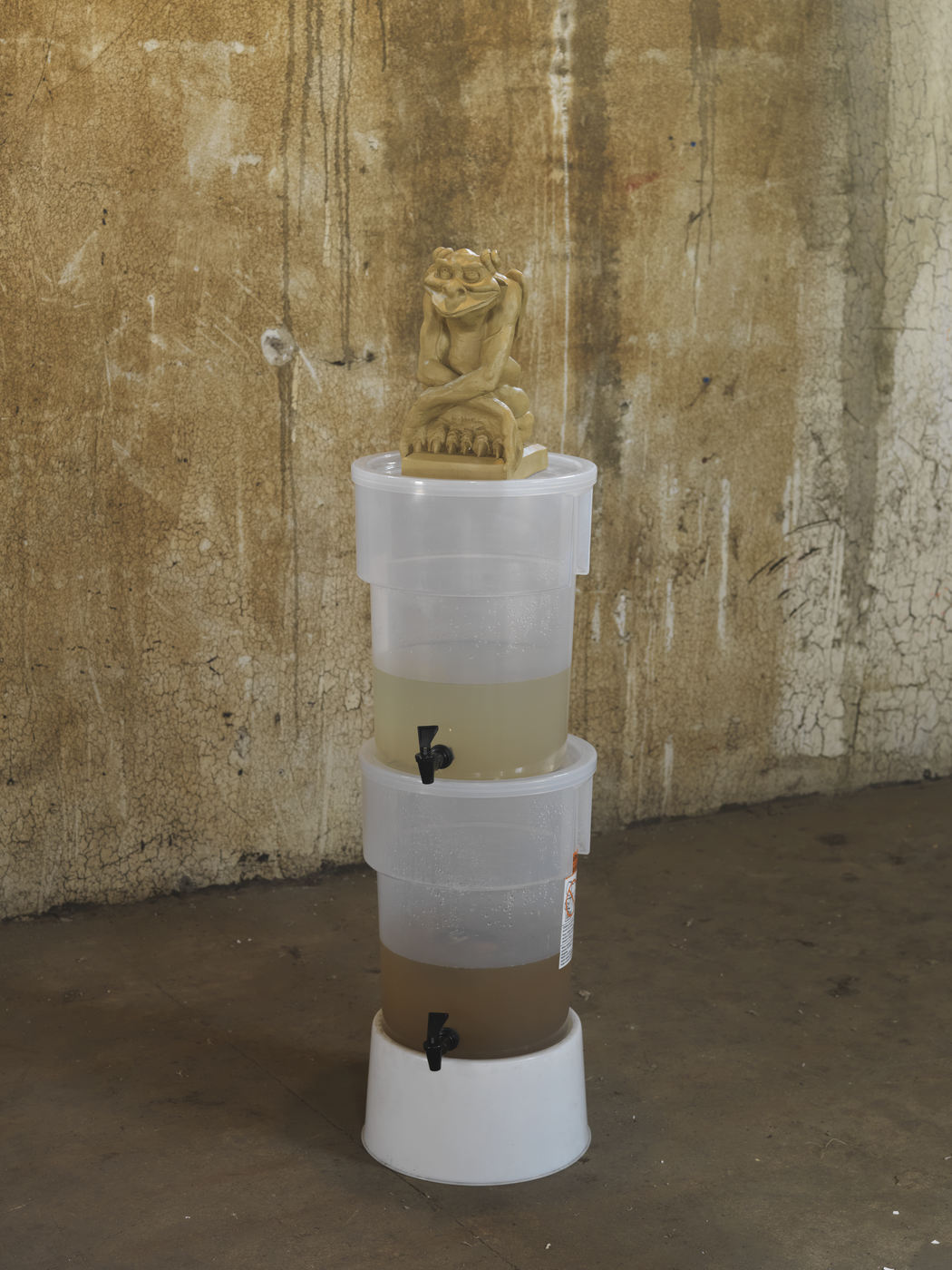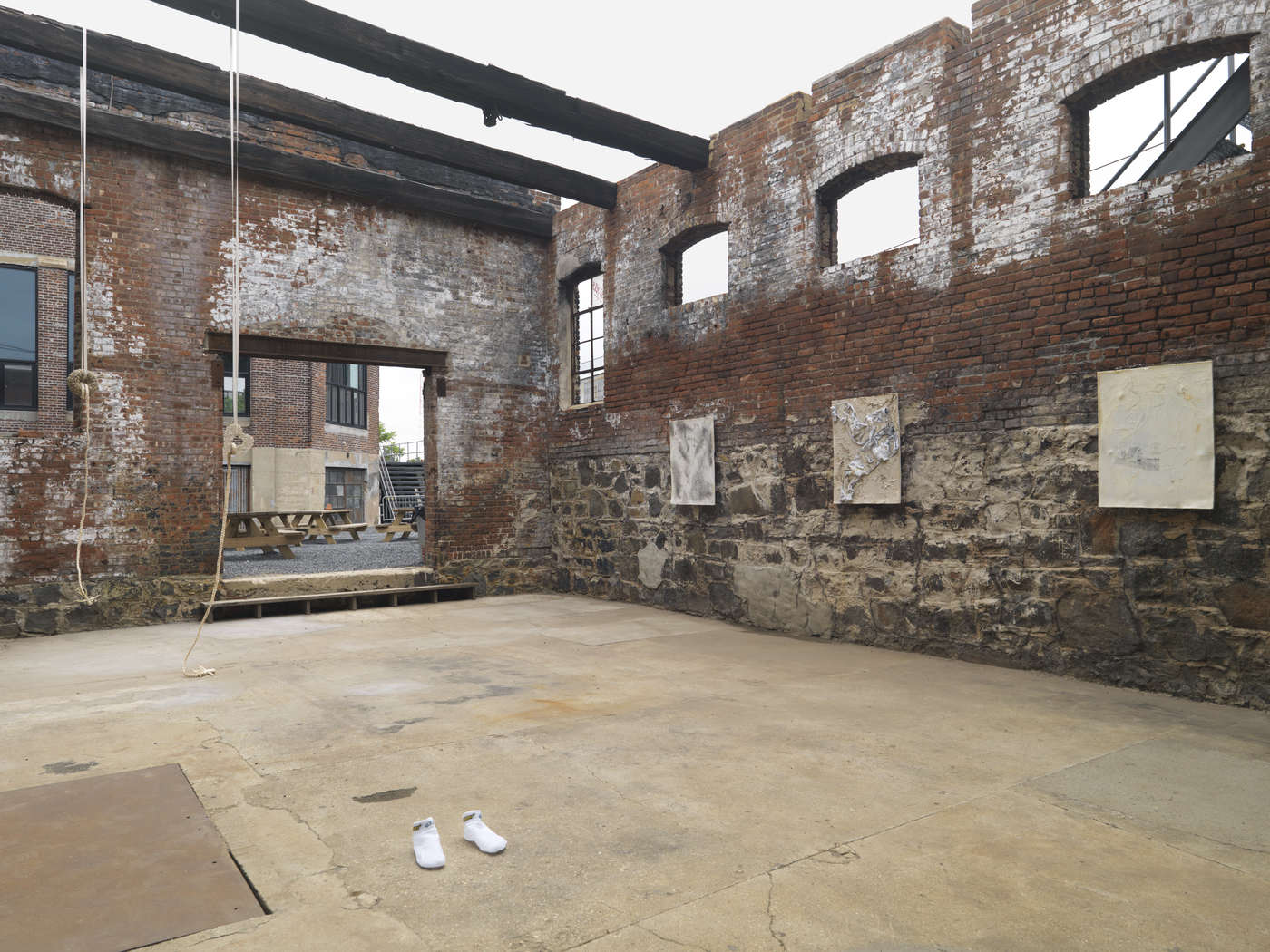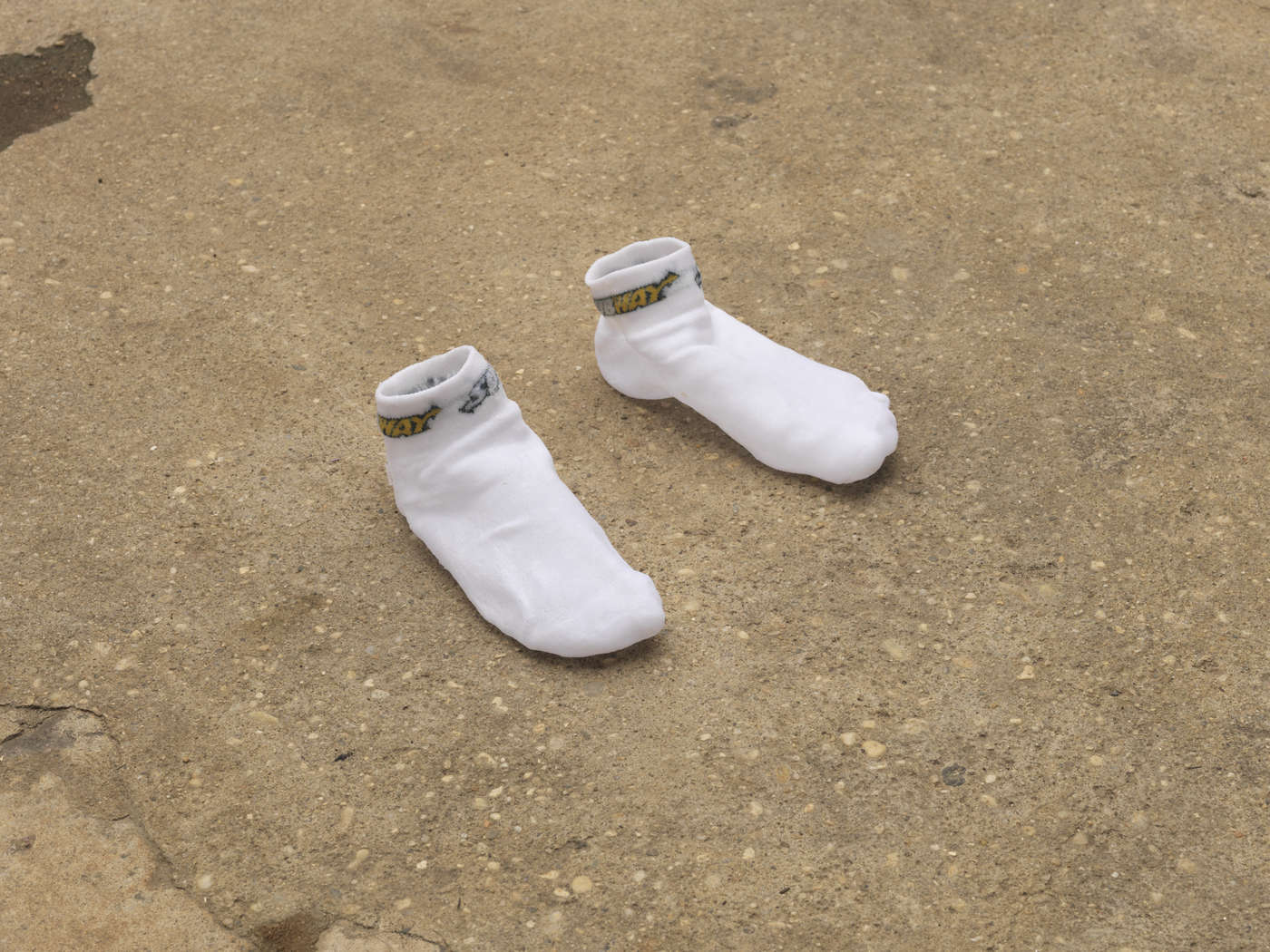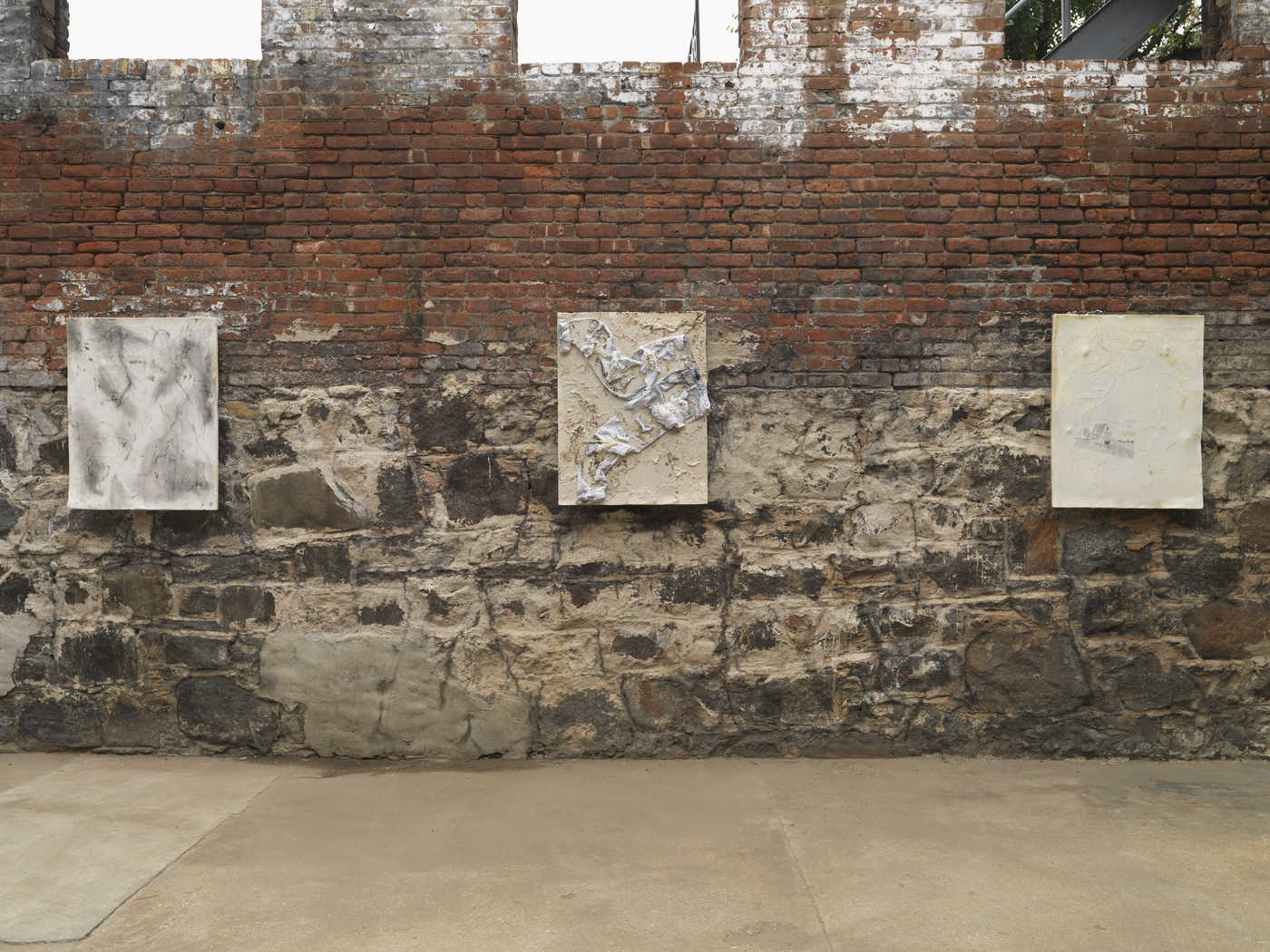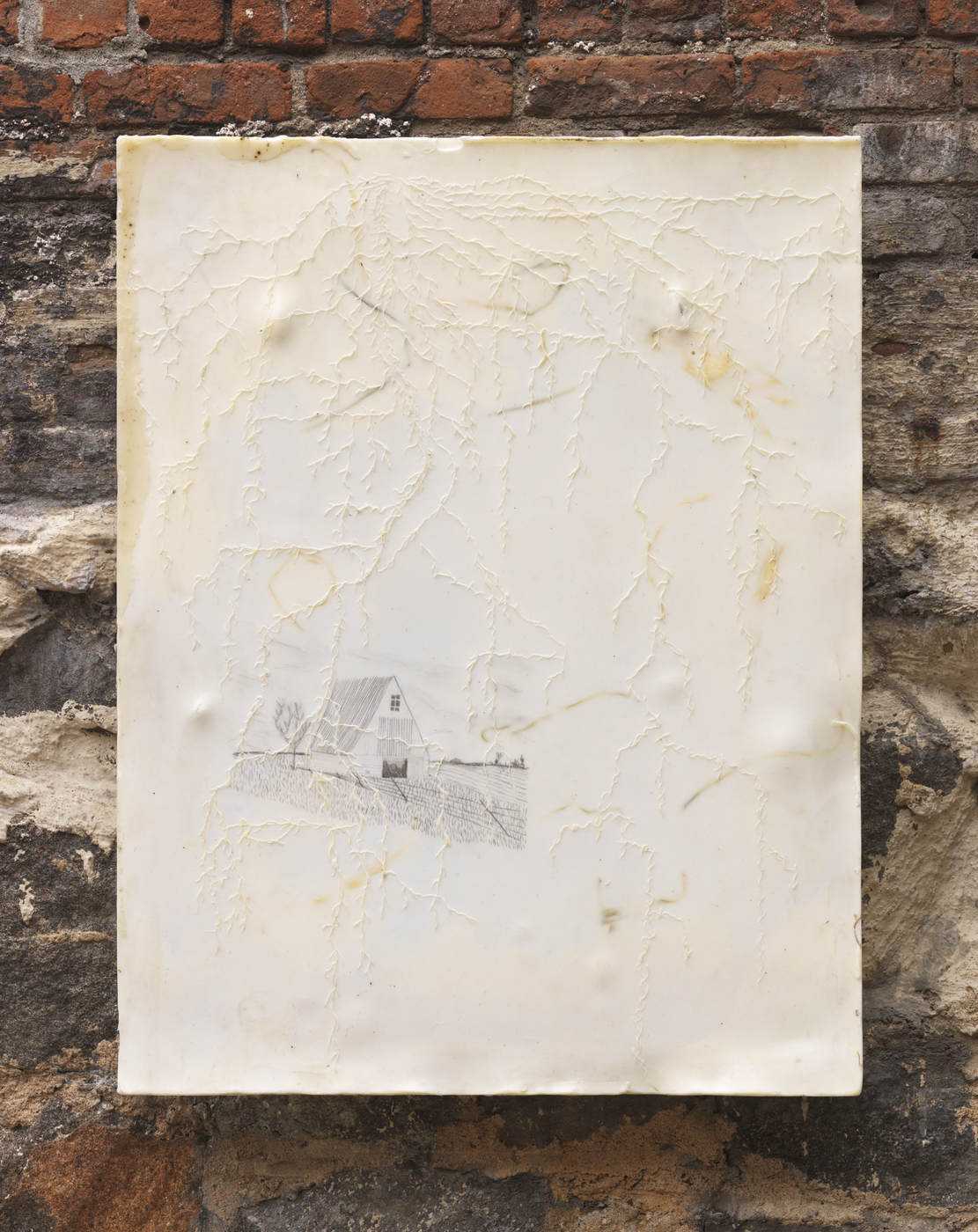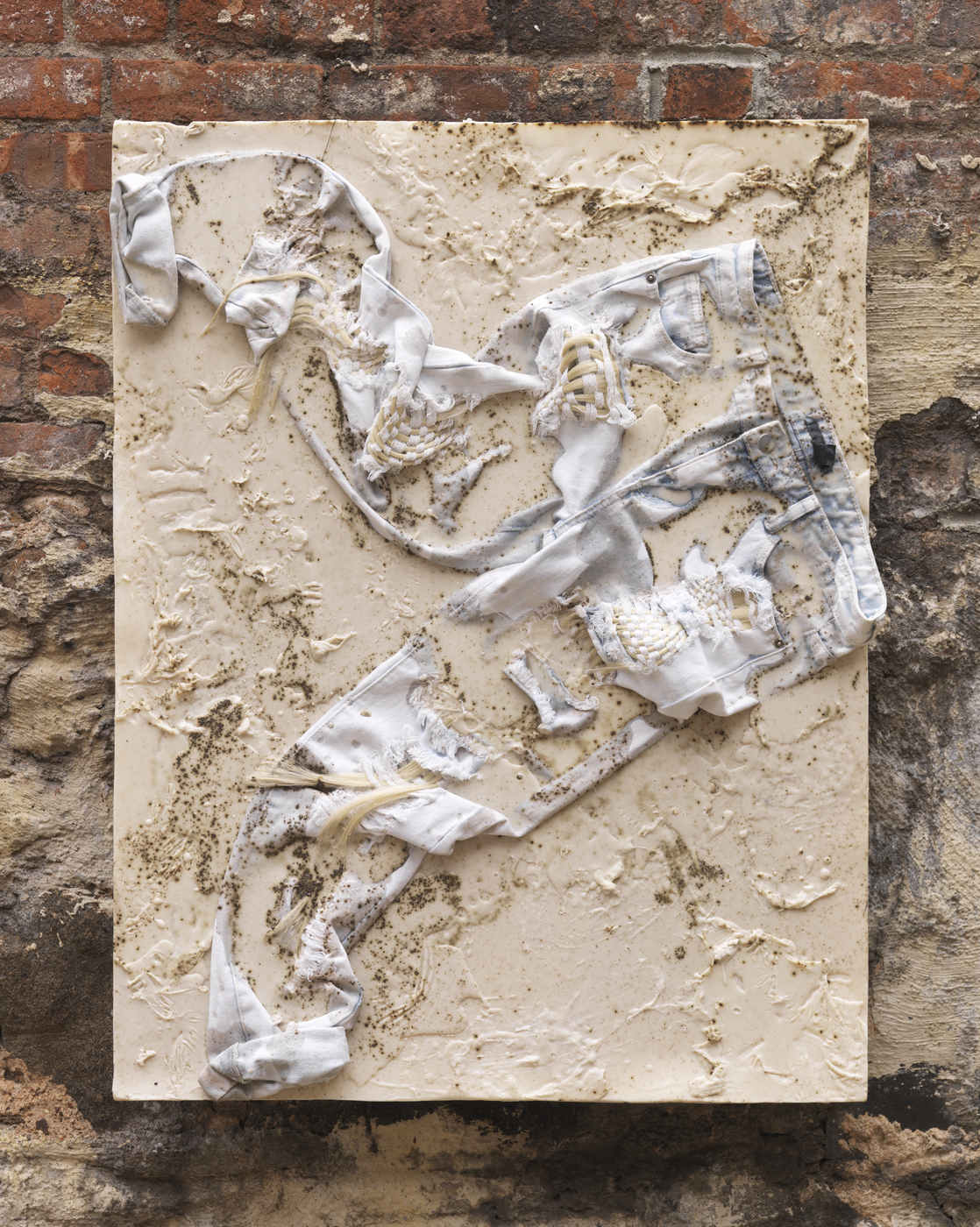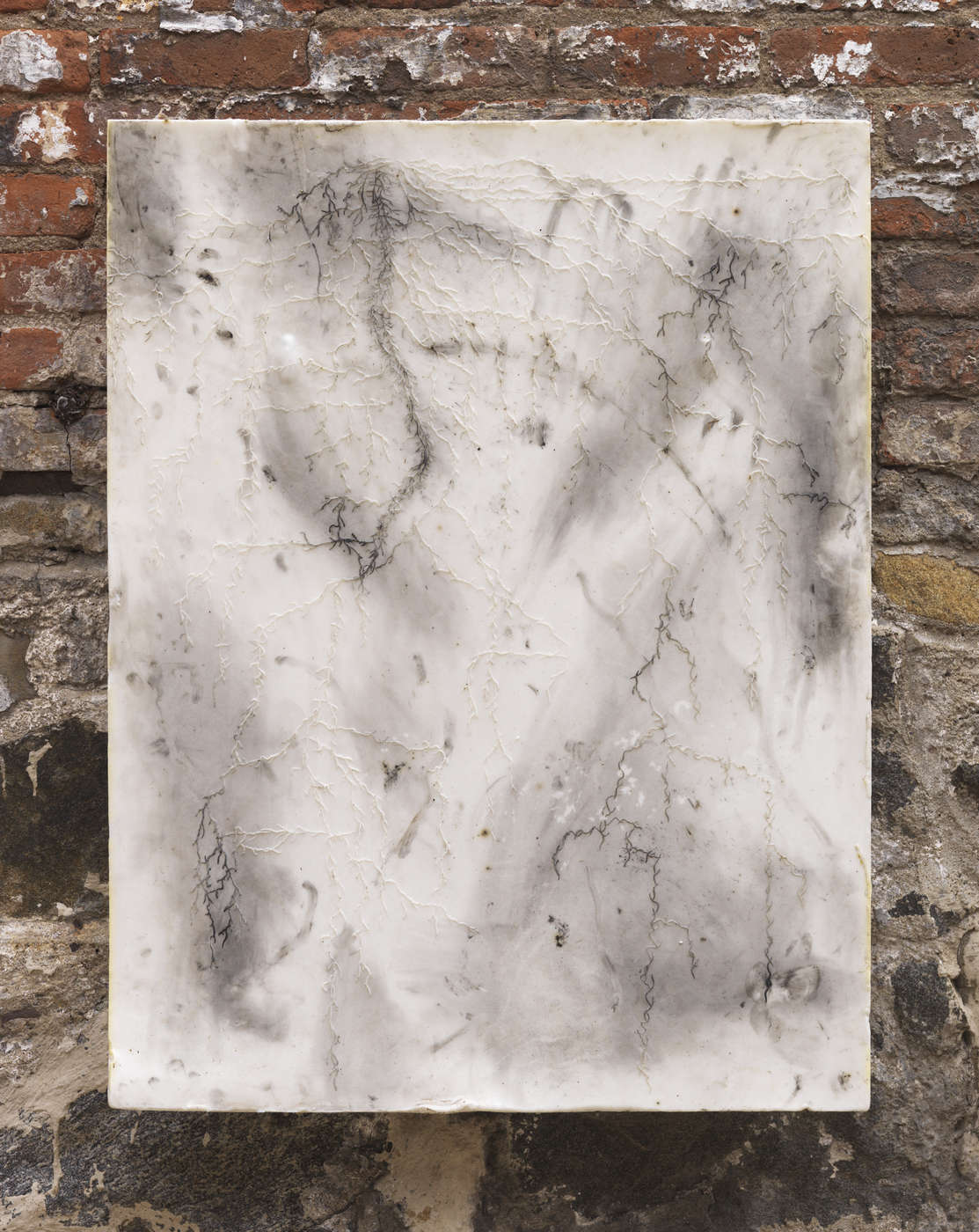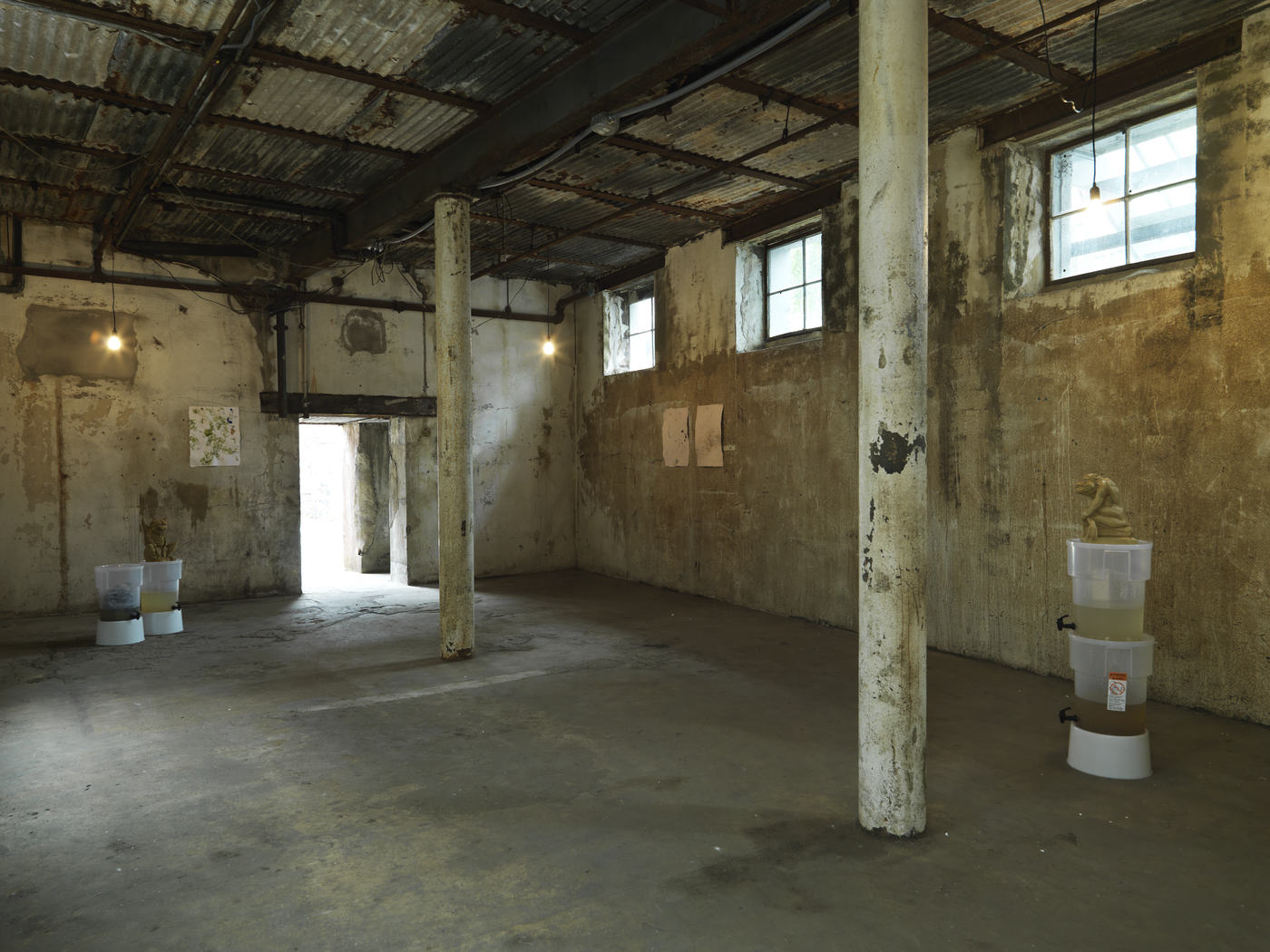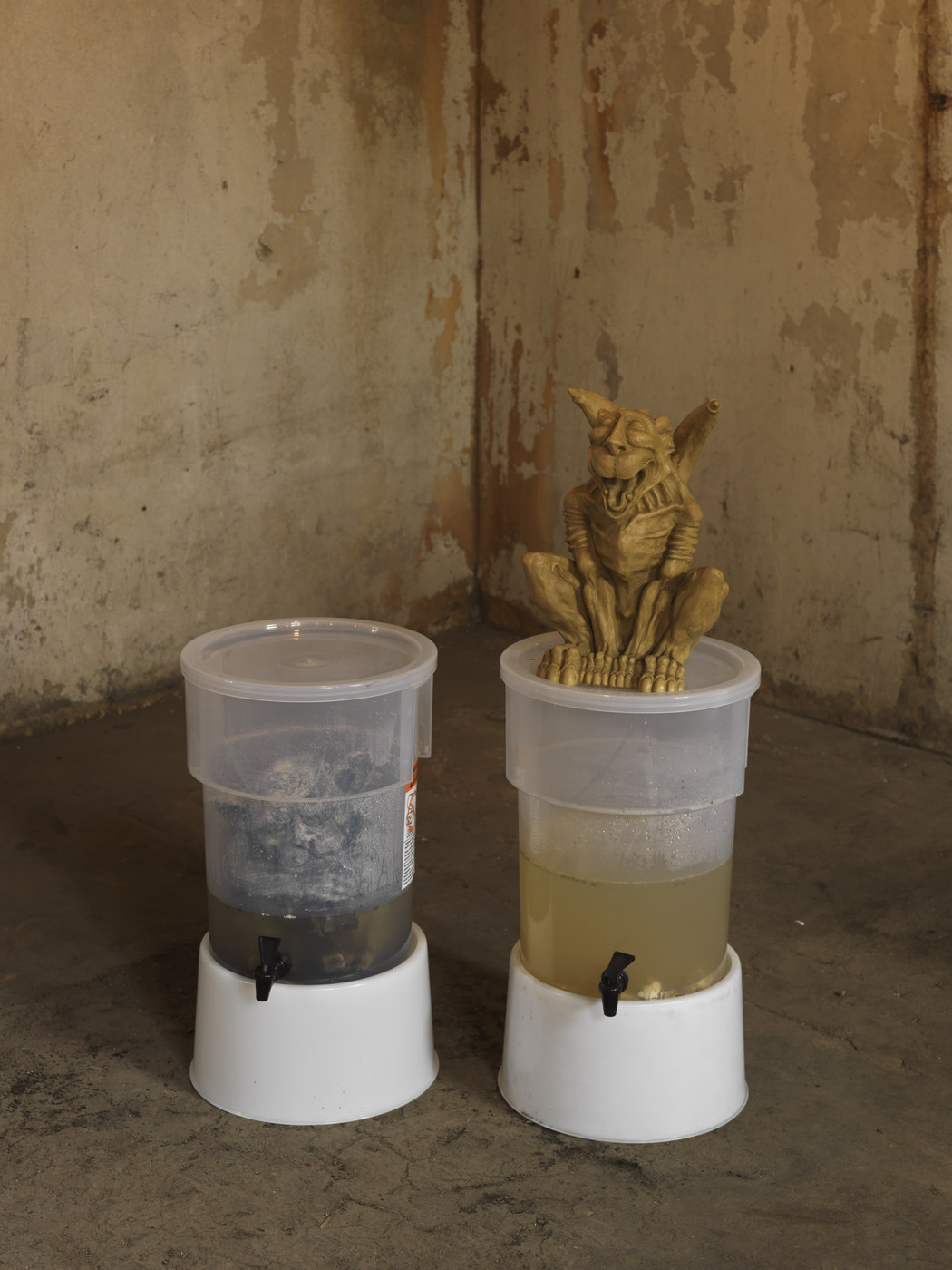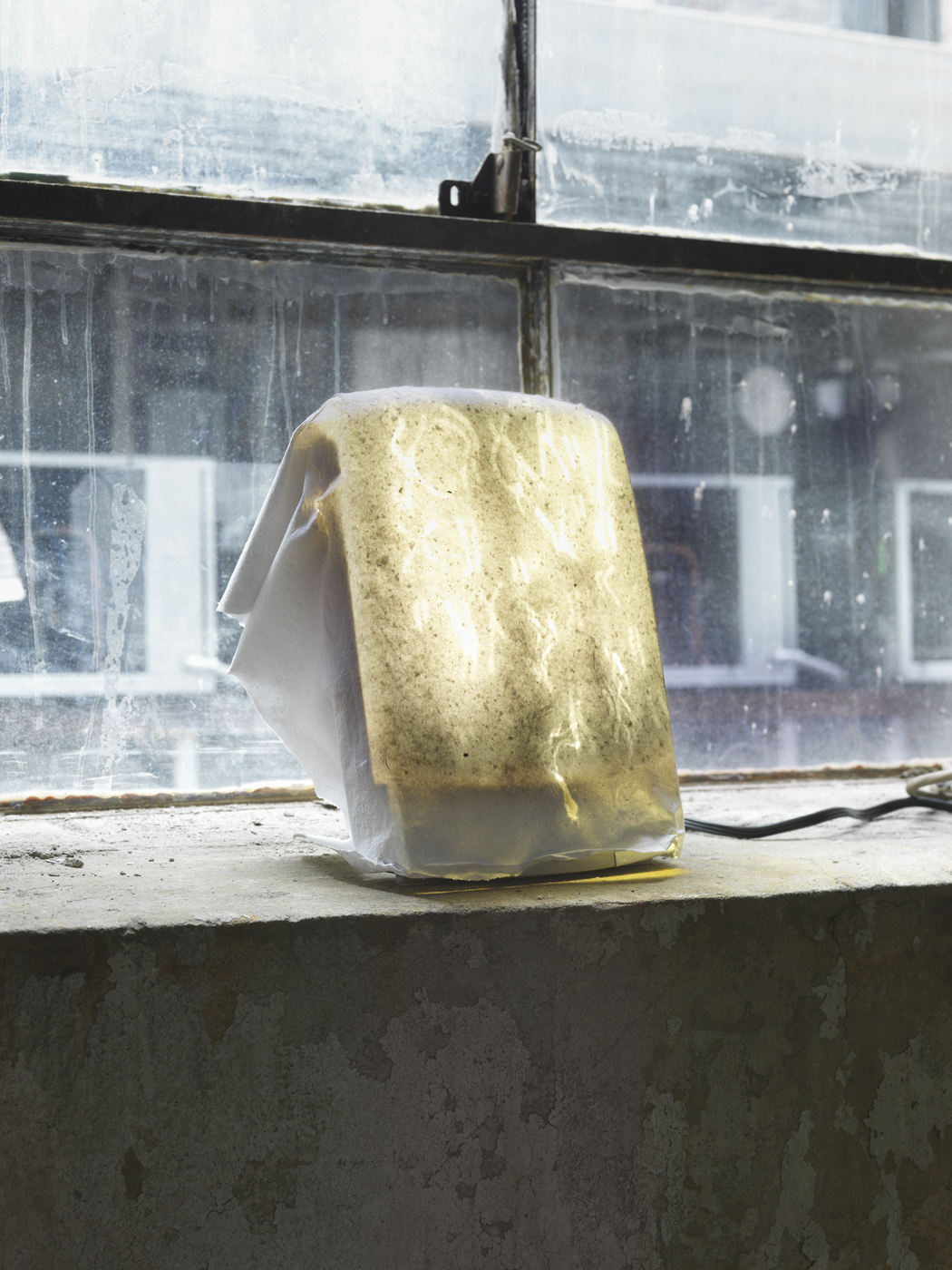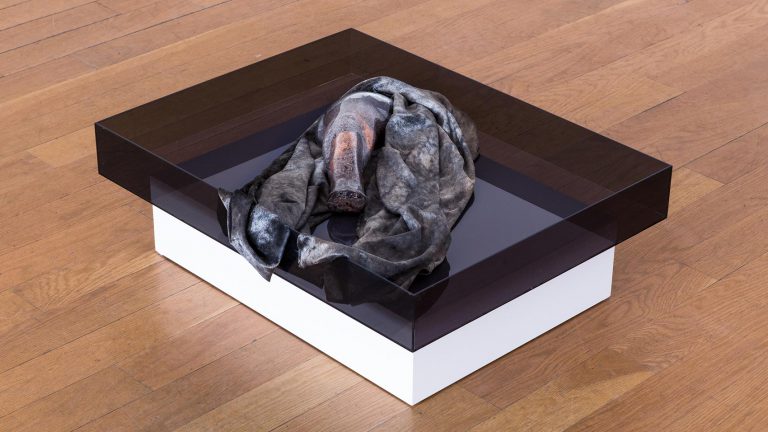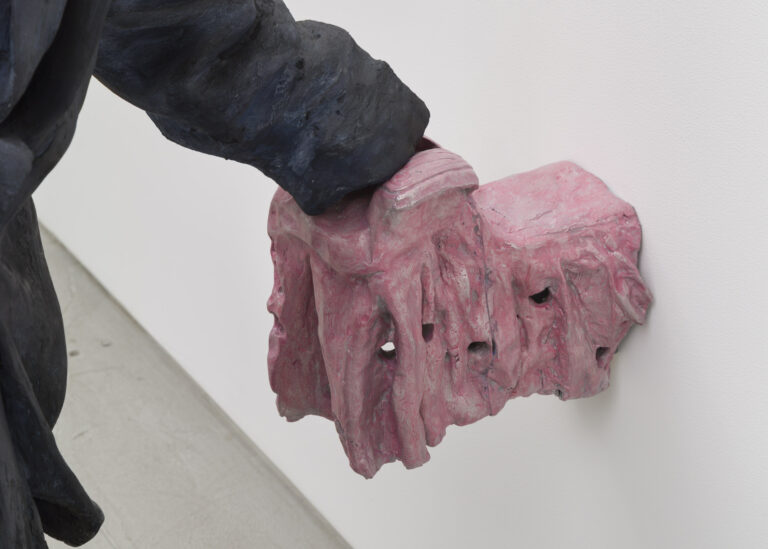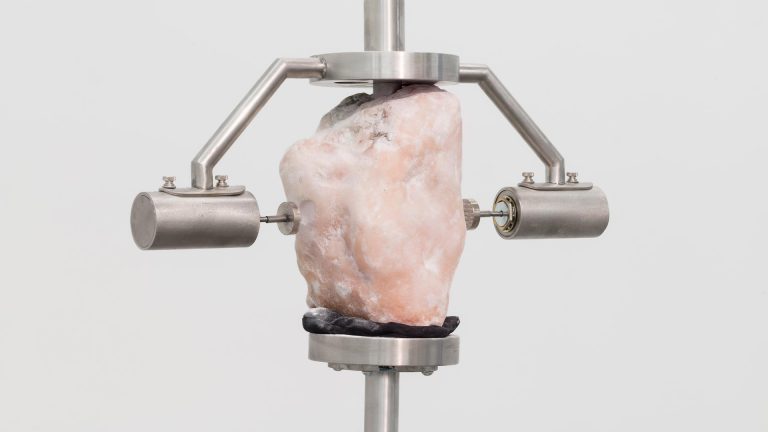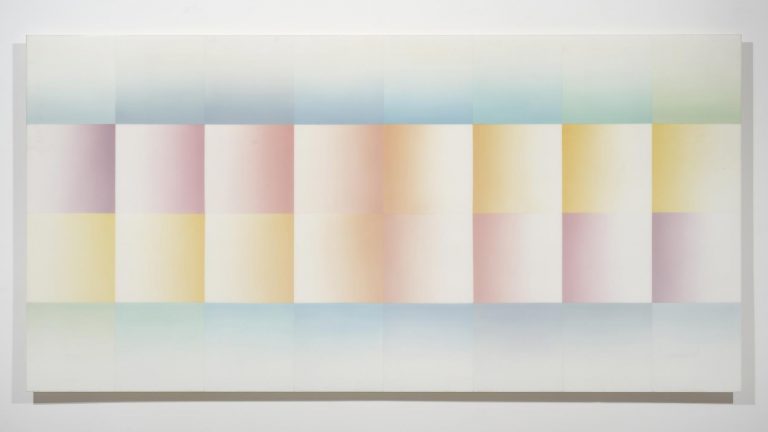Artists: Loney Abrams and Johnny Stanish
Exhibition title: So much dirt but not enough soil
Venue: Knockdown Center, New York, US
Date: July 9 – August 7, 2016
Photography: all images copyright and courtesy of the artists
New York based artists Loney Abrams and Johnny Stanish have taken interest in the relationships between an object’s outward appearance, and the object’s intrinsic material makeup — it’s ingredients list, it’s nutritional value, it’s metadata — and the potential for this material to embody FDA politics. So Much Dirt But Not Enough Soil utilizes materials like Miracle Grow, live active culture l. acidophilus, liquid THC, the introduction to Capitalism and Freedom by Milton Friedman (shredded and pulped), yellow #5, ginkgo biloba, Flavor Dynamics’ CHEF-ASSIST® Harvest Spice Flavoring, 3-methyl butanoic acid (the smell of body odor), crushed Adderrol, aspartame, among others.
The exhibition is held within the remains of a century-old stone building, which encompasses three separate rooms, one of which has no roof and is exposed to the elements. Soap wall pieces cast in relief, potentially lathered by rain and humidity, match one another in form, while their varied material makeups describe a society that tends to overprescribe and sanitize. A miniature wargame terrain board suggests a terraformed mars. Seasonal Affect Disorder (SAD) lamps act as light boxes to illuminate handmade watermarked paper. Dispensers filled with DIY plant food include ingredients like worm poop and Bud Lite Lime. And images that link Michelle Obama’s partnership with Subway and her White House garden initiatives are intermixed with Monsanto’s genetically modified alfalfa seeds deregulated by the very same Obama Administration, in handmade paper wall pieces.
Not unlike the consumer’s experience in the grocery store, where food products are accompanied by text listing ingredients and nutritional value (along with marketing copy), the art consumer is presented with language — title, date, dimensions, materials, a press release — that may reveal meaning illegible in the work itself. In the bread aisle, two loaves of bread may look nearly identical in form, but to the discerning consumer, their ancillary texts reveal two distinct products in support of vastly differing production methods, political economies, and consequences: one ingredients list reads ‘flour, water, yeast, salt’ while the other lists fourteen ingredients, more than half of which are names of chemical compounds. This ancillary text places the ethical burden on the consumer to make the right choice; rather than find an alternative to plastic, Poland Spring urges their customers to recycle their bottles. We’ve learned that the products we consume, whether food, drugs, or hygienic products, are defined not by what they appear to be but by what they are made of and how they are produced; they are intrinsically political. In the same way that we can no longer assume a wall piece is made of paint and canvas, we’re both burdened and enlightened by the text, or metadata, that accompany the objects that surround us.
Loney Abrams (b. 1986, Boston MA) and Johnny Stanish (b. 1983, Great Falls MT) both received their MFAs from Pratt Institute in 2013. They’ve been working collaboratively since 2014. Recent solo (collaborative) exhibitions include Gluteus Maximus at Java Projects in Brooklyn, and Polly wants a cracker and distressed denim from Forever 21 at Beverly’s in New York. Recent group exhibitions include Ashes/Ashes in Los Angeles, Regina Rex in New York, and Material Art Fair in Mexico City. Abrams and Stanish also run http://hotel-art.us/, a curatorial initiative that installs temporary exhibitions in unlikely spaces for the purposes of generating documentation for online audiences. Their forthcoming solo exhibition at Sadie Halie Projects in Minneapolis opens October 22nd.

